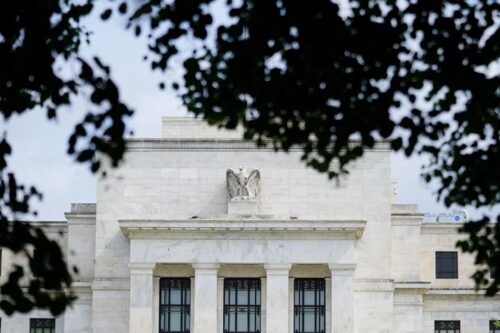
7.5.24 – Reuters – By Howard Schneider
The labor market is returning to its pre-pandemic state, with conditions that are “tight but not overheated,” according to the Federal Reserve’s latest Monetary Policy Report to Congress. It also noted that inflation is easing and that price increases in housing services will likely return to their pre-pandemic levels as well.
July 5 (Reuters) – Inflation is easing and the job market has returned to the “tight but not overheated” situation seen before the COVID-19 pandemic threw the U.S. economy into disarray, the Federal Reserve said on Friday in a report to Congress that documented the steady emergence of more normal conditions in the aftermath of the health crisis.
“Inflation eased notably last year and has shown modest further progress so far this year,” the Fed said in its latest Monetary Policy Report to Congress, noting that in the key area of housing services it is likely just a matter of time before the pace of price increases settles back to where it was before the health crisis.
The job market, meanwhile, “continued to rebalance over the first half of this year,” the report noted. “Labor demand has eased, as job openings have declined in many sectors of the economy, and labor supply has continued to increase, supported by a strong pace of immigration.”
“The balance between labor demand and supply appears similar to that in the period immediately before the pandemic, when the labor market was relatively tight but not overheated. Nominal wage growth continued to slow,” the report said.
The twice-yearly report to Congress comes ahead of two days of testimony by Fed Chair Jerome Powell, set for Tuesday and Wednesday next week, that is likely to focus on the Fed’s plans for monetary policy heading into a sensitive election season.
Job growth has been slowing, and the unemployment rate has risen steadily from 3.5% last July to 4.1% as of June. Inflation remains around 2.6% by the Fed’s preferred Personal Consumption Expenditures Price index, still regarded as “elevated” by policymakers but edging towards a point where that may no longer be the case.
New inflation data will be released on Thursday, and if price pressures continue easing it may prompt Fed officials to at least open the door to interest rate cuts as soon as September – a call Powell and his colleagues say will be based solely on the economics of the situation, not how it affects the political prospects of either party ahead of November elections.
POLICY INDEPENDENCE
In a possible nod to the political sensitivities of the moment – including speculation that likely Republican presidential nominee Donald Trump may, if he wins, try to force out Powell before his term is up in 2026 – the report included as one of its “Special Topics” a short essay titled “Monetary Policy Independence, Transparency, and Accountability.”
The message: The Fed is accountable first and foremost to Congress, which gave the central bank “operational independence” in setting interest rates precisely so those decisions would be “insulated from short-term political influences.”
“It is widely understood that the monetary policy actions that deliver maximum employment and price stability in the longer run may involve restraining measures that entail short-run economic costs, while actions that raise output and employment to unsustainable levels have no long-run real benefits and may lead to elevated inflation rates,” the Fed wrote, noting that central bank independence was a well-established “international norm.”
Yet both Democrats and Republicans are likely to quiz Powell on whether the Fed is holding true to that standard during the two days of testimony.
The Fed at its most recent policy meeting in June left interest rates unchanged at 5.25%-to-5.50%, and fresh projections from policymakers showed them dialing back expectations for rate cuts this year from three to just one. Financial markets and some policymakers, however, still expect the Fed to deliver two cuts of a quarter-point each by year end.
A number of congressional Democrats have already been hounding Powell over high rates, complaining they are exacerbating housing affordability for low- and middle-income households. Republicans, meanwhile, have been critical about the Fed’s initially slow response to inflation and could chastise Powell over any indication he may lower rates ahead of the election.
But whether rate cuts start now or later, the moment is likely approaching.
Indeed in a now standing chart in the report, included at the urging in particular of Republican lawmakers, several monetary policy rules suggest that rate cuts are overdue.
“The current prescriptions from these rules are close to or below the current target range for the federal funds rate,” the report noted in its discussion of different variations of what is known as the Taylor Rule for setting the Fed’s benchmark policy rate.
Get a look at the day ahead in U.S. and global markets with the Morning Bid U.S. newsletter. Sign up here.
Reporting by Howard Schneider, Ann Saphir and Michael Derby; Editing by Andrea Ricci
